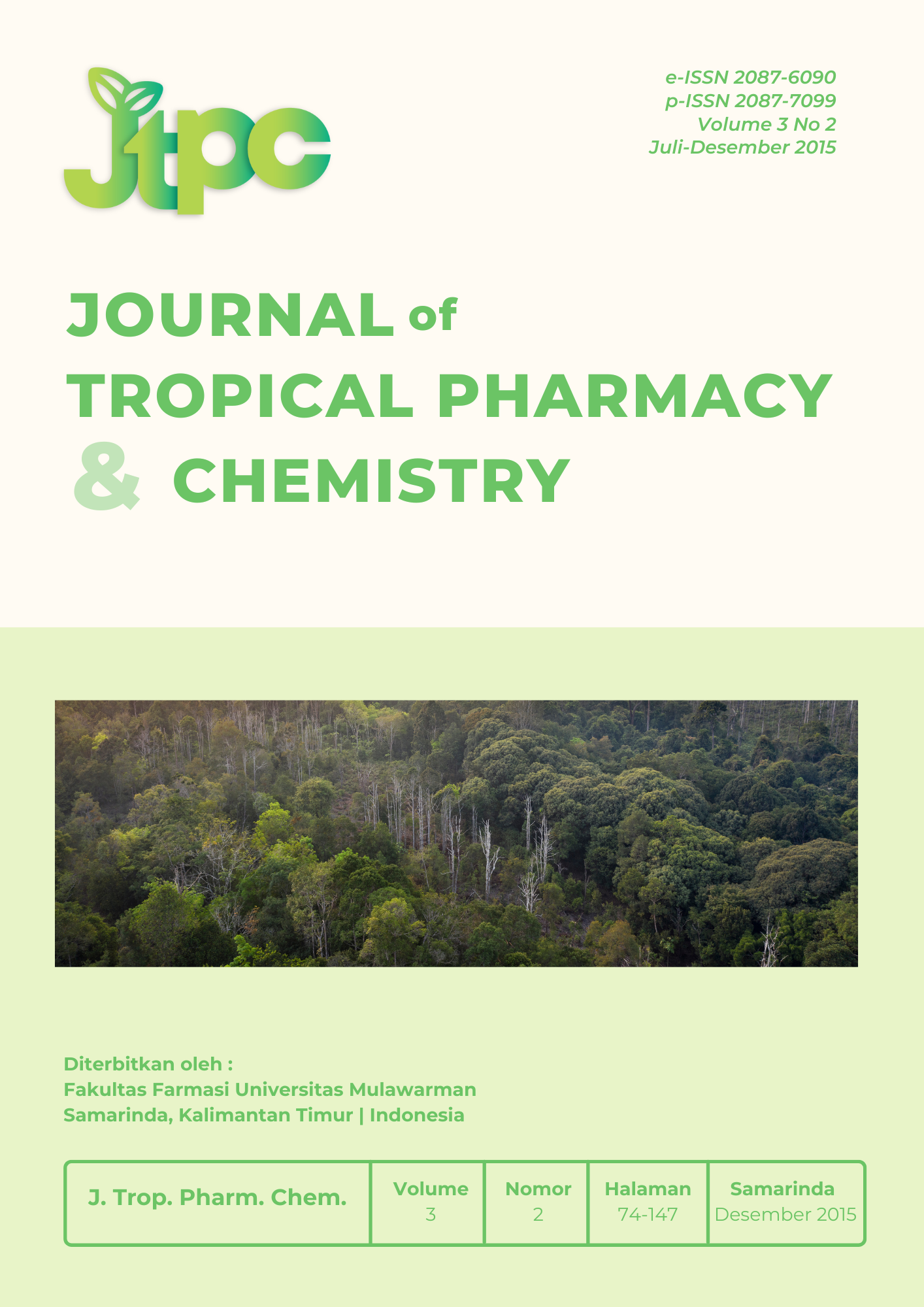Aktivitas Antijamur dan Identifikasi Metabolit Sekunder Isolat Jamur Endofit dari Daun Yakon (Smallanthus sonchifolius) terhadap Beberapa Jamur Patogen
Keywords:
endophytic fungi, Smallanthus sonchifolius, antifungal, Thin Layer Chromatography (TLC)Abstract
Each plant is host to one or more endophytes contain bacteria and fungi. Endophytic fungi could potentially have an activity and produce secondary metabolites same as its host. Yacon leaf (Smallanthus sonchifolius) has been known to have antimicrobial activity that allow the endophytic fungi also has potential as antimicrobial. The purpose of this research was to isolated the endophytic fungi from Yacon leaf which has activity as antifungal and can produce secondary metabolites same as its host. The method that used to test the activity of endophytic fungi are using direct planting method, whereas the identification of secondary metabolites using Thin Layer Chromatography (TLC) and spray reagent. The results were obtained that the endophytic fungi has an activity as antifungal against Candida utilis, Candida albicans and Malassezia Purpur, along with the presence of secondary metabolites that same as its host.
Downloads
References
1.Choi, J.G., O.H. Kang, Y.S. Lee, Y.C. Oh, H.S. Chae, B. Obiang-Obounou, S.C. Park, D.W. Shin, B.Y. Hwang, dan D.Y. Kwon. 2010. Antimicrobial Activity of the Constituents of Smallanthus sonchifoliusLeaves Against Methicillin-Resistant
Staphylococcus aureus. European Review for Medical and Pharmacological Sciences. 14. 1005-1009.
2.Hong, S.S., S.A. Lee, X.H. Han, M.H. Lee, J.S. Hwang, J.S. Park, K.W. Oh, K. Han. M.K. Lee, H. Lee, W. Kim, D. Lee, dan B.Y. Hwang. Melampolides from the Leaves of Smallanthus sonchifolius and Their Inhibitory Activity of LPS-
Induced Nitric Oxide Production. Chem Pharm Bull.56(2).199-202.
3.Varma, A., L. Abbott, D. Warner, R. Hampp. 2008. Plant Surface Microbiology. Springer-Verlag Berlin Heidelberg. New York.
4.Strobel, G.A. dan B. Daisy. 2003. Bioprospecting for Microbial Endophytes and Their Natural Products. Microbiology and MolecularBiology Reviews. 67.(4).491-502.




